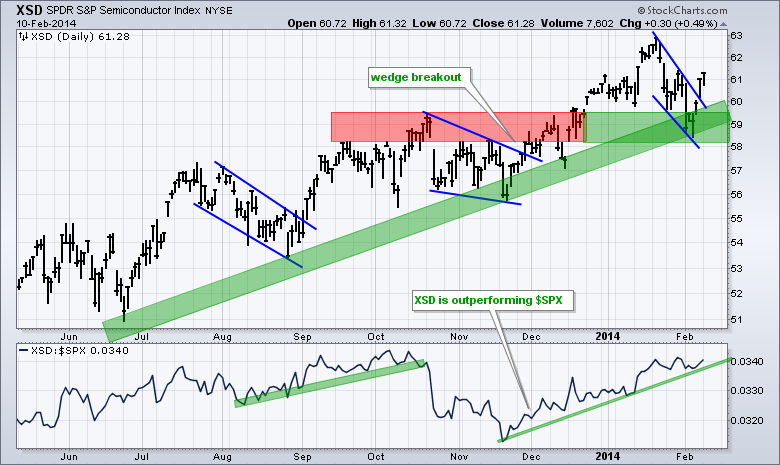Stocks extended their bounce with small gains in the major index ETFs on Monday. The Nasdaq 100 ETF (QQQ) led the way with a .57% gain and the S&P 500 SPDR (SPY) gained .18% on the day. The sectors were mixed with the Consumer Discretionary SPDR (XLY), Industrials SPDR (XLI) and Energy SPDR (XLE) falling. The HealthCare SPDR (XLV), Consumer Staples SPDR (XLP) and Utilities SPDR (XLU) gained, in what could be seen as defensive posturing ahead of today's testimony from Fed Chair Yellen. Tech stocks were especially strong on Monday with the Networking iShares (IGN) surging over 1% and the Semiconductor SPDR (XSD) building on its wedge breakout. The chart below shows XSD affirming support in the 58-59 area with the four day bounce. Also notice that XSD is outperforming the S&P 500.
**This chart analysis is for educational purposes only, and should not
be construed as a recommendation to buy, sell or sell-short said securities**
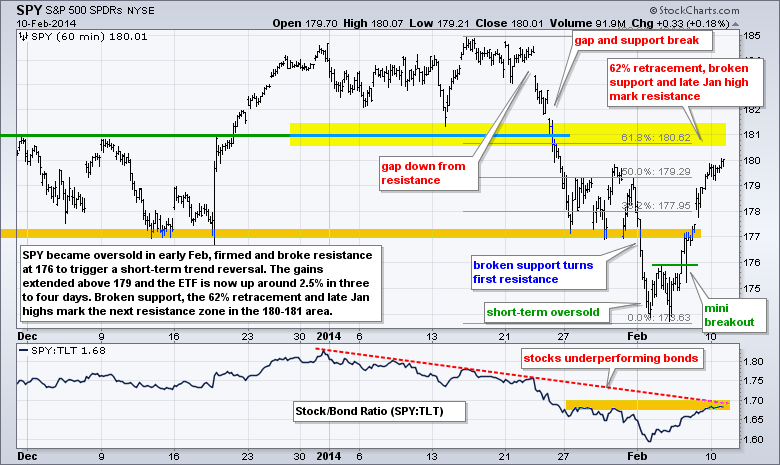
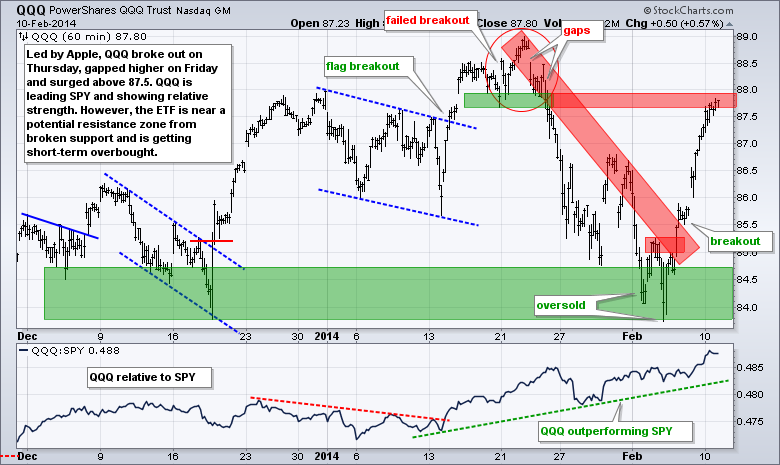
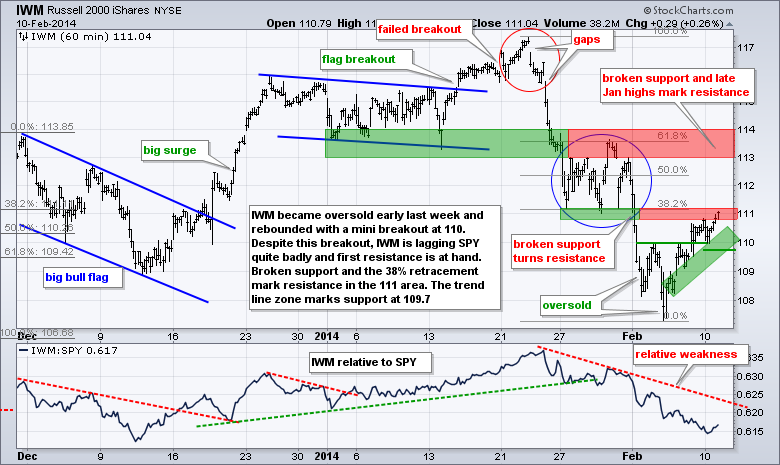
**************************************************************
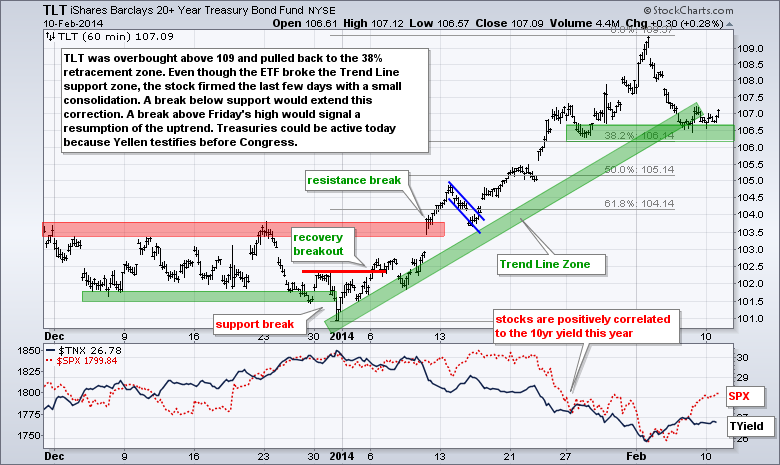
**************************************************************
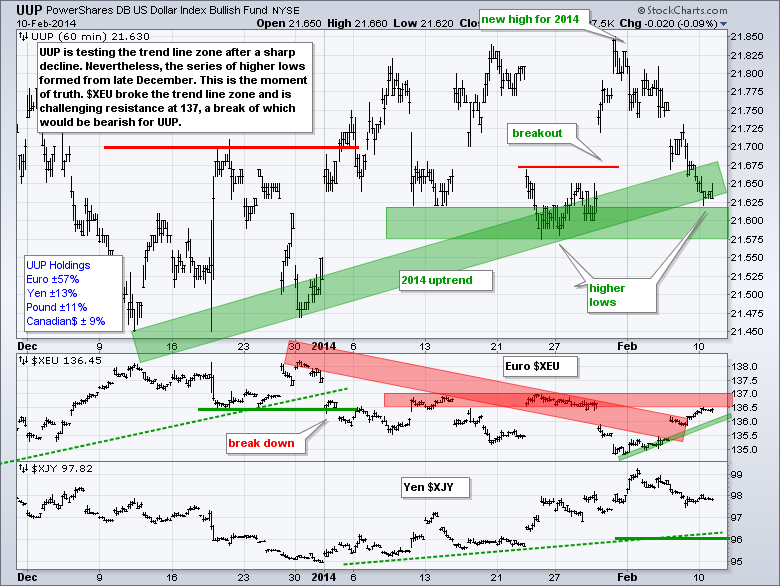
**************************************************************
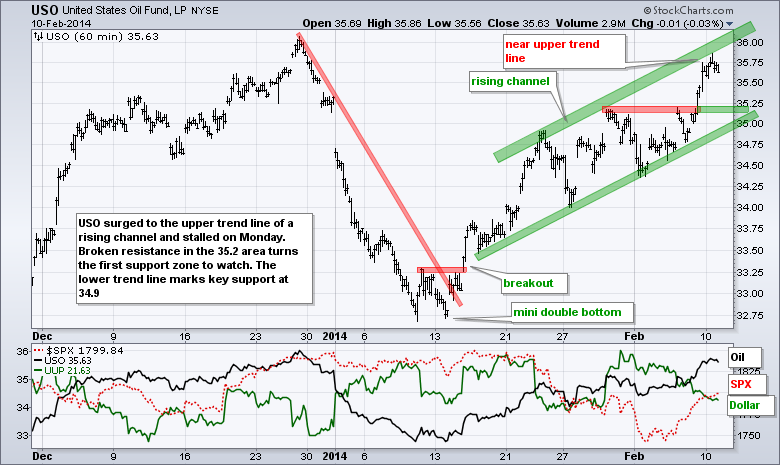
**************************************************************
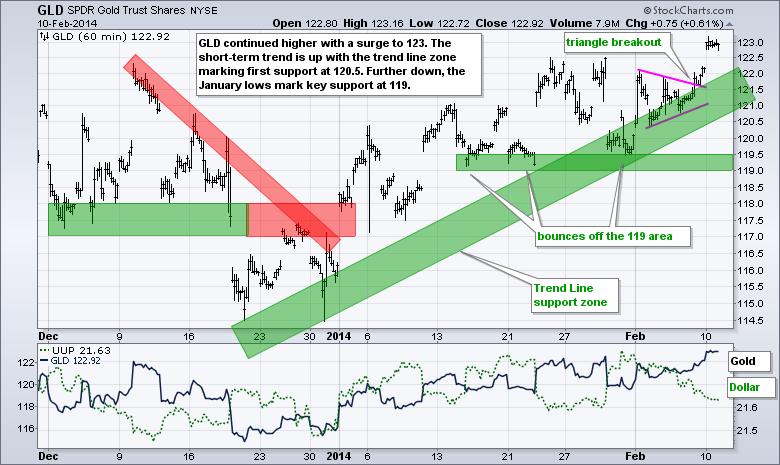
***************************************************************
Key Reports and Events (all times Eastern):
Tue - Feb 11 - 10:00 - JOLTS - Job Openings (Dec)
Tue - Feb 11 - 10:00 - Yellen Testifies
Wed - Feb 12 - 07:00 - MBA Mortgage Index
Wed - Feb 12 - 10:30 - Crude Inventories
Thu - Feb 13 - 08:30 - Initial Claims
Thu - Feb 13 - 08:30 - Retail Sales
Thu - Feb 13 - 10:30 - Natural Gas Inventories
Thu - Feb 13 - 10:30 - Yellen Testifies
Fri - Feb 14 - 09:15 - Industrial Production
Fri - Feb 14 - 09:55 - Michigan Sentiment
Charts of Interest: Tuesday and Thursday
This commentary and charts-of-interest are designed to stimulate thinking. This analysis is
not a recommendation to buy, sell, hold or sell short any security (stock ETF or otherwise).
We all need to think for ourselves when it comes to trading our own accounts. First, it is
the only way to really learn. Second, we are the only ones responsible for our decisions.
Think of these charts as food for further analysis. Before making a trade, it is important
to have a plan. Plan the trade and trade the plan. Among other things, this includes setting
a trigger level, a target area and a stop-loss level. It is also important to plan for three
possible price movements: advance, decline or sideways. Have a plan for all three scenarios
BEFORE making the trade. Consider possible holding times. And finally, look at overall market
conditions and sector/industry performance.

